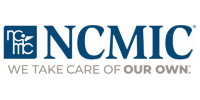The recent UnitedHealthcare (UHC) release has been a wake-call to the chiropractic profession. All corners of the profession are working together in response to this ominous action by UHC, which is apparently meant to restrict chiropractic care of children and adolescents and chiropractic care of patients suffering from headaches. There is absolutely no scientific support for the position taken by UHC, and the chiropractic profession will not stand by while patients are harmed as a result of this unfounded policy, a policy which restricts chiropractic coverage and ultimately the appropriate use and reimbursement of chiropractic care. The chiropractic profession will stand united against this spurious action by UHC. We will take all necessary action to stop this harmful policy from being implemented. The chiropractic profession supports the appropriate application of EBM to clinical practice, whether chiropractic or medical. But we will not sit back and allow our doctors of chiropractic and their expert conservative care to be singled out and treated unfairly -- by being held to a higher standard than our colleagues in other health care disciplines. The attached response to the UHC release was created by the Council on Chiropractic Guidelines and Practice Parameters and is fully supported by the undersigned chiropractic organizations. We anticipate other organizations will be speaking out in support of this response in the near future. Watch for more news on this critical issue. American Chiropractic Association Association of Chiropractic Colleges Congress of Chiropractic State Associations Council on Chiropractic Guidelines and Practice Parameters Foundation for Chiropractic Education and Research International Chiropractors Association ********************************* Joint Cover Letter to United Healthcare October 9, 2007 Mr. Robert J. Sheehy Chief Executive Officer UnitedHealthcare 450 Columbus Blvd. Hartford, CT 06103 Dear Mr. Sheehy: This letter is a joint communication from the undersigned chiropractic organizations. Our organizations represent the mainstream of the chiropractic profession in the areas of professional practice, research and clinical guidelines. We write to you today in connection with the recent special bulletin pertaining to chiropractic services related to children, adolescents and headaches (United Healthcare Network Bulletin, Volume 21, September 2007). It states: "United Healthcare had previously concluded that certain services provided as a part of chiropractic care were unproven. A recent review of the clinical evidence in published peer-reviewed medical literature leads us to further conclude that chiropractic services for treatment of children and adolescents is unproven and services for treatment of headaches is unproven." Attached is an analysis which demonstrates that the above policy is not only flawed but more importantly poses a threat to the health of children, adolescents and those individuals suffering with headache pain who may be insured or otherwise covered under United Healthcare programs and policies. We view your recent policy determination to be a material denial of essential benefits and coverage paid for by employers and other insureds. The broad stroke elimination of these important benefits is, in our view, not only unconscionable but is an abrogation of the promises made to cover chiropractic services to employees, individuals and their dependants. We note that none of our organizations were contacted or consulted in connection with your drastic and unprecedented denial of benefits to adolescents, children and those suffering with headache pain. In our opinion, this raises serious questions as to your intentions and we question to whether your motivation for the bottom line outweighs your responsibility to provide coverage for appropriate and needed healthcare services. We would therefore request the immediate rescission of the above-referenced policy. We offer our assistance to provide whatever input your organization may need to craft policies that are reflective of health needs of chiropractic patients under your programs. We intend to inform our patients, state and federal regulatory authorities, members of the various state legislatures, members of Congress and the public of what we view as your inappropriate and reckless action in the denial of needed healthcare benefits to adolescents, children and those suffering with headache pain under your program. We stand ready to engage in constructive dialog on these matters, but the first step in the process must be the immediate rescission of the policy contained in the above-referenced network bulletin. Sincerely, Glenn D. Manceaux, D.C. President, American Chiropractic Association Wayne M. Whalen, DC, DACAN Chair, Council on Chiropractic Guidelines and Practice Parameters Charles Herring, D.C. President, Foundation for Chiropractic Research and Education Carl S. Cleveland III, D.C. President, Association of Chiropractic Colleges R. Jerry DeGrado, D.C., F.I.C.C President, Congress of Chiropractic State Associations John Maltby D.C. President, International Chiropractors Association ********************************* CCGPP Analysis/Letter to UHC October 8, 2007 To: Stephen J. Hemsley President and Chief Executive Officer UnitedHealth Group 9900 Bren Road East, Minetonka MN 55343 From: Dr. Wayne Whalen, Chairman, Council on Chiropractic Guidelines and Practice Parameters (CCGPP) RE: United HealthCare NetworkBulletin Volume 21 September 2007 Recently UHC released a special bulletin, United HealthCare NetworkBulletin Volume 21 September 2007, concerning chiropractic services related to children, adolescents, and headaches. It states, "United HealthCare had previously concluded that certain services provided as a part of chiropractic care were unproven. A recent review of the clinical evidence in published peer-reviewed medical literature leads us to further conclude that chiropractic services for treatment of children and adolescents is unproven and services for treatment of headaches is unproven." The Council on Chiropractic Guidelines and Practice Parameters, the principal agency in the United States that evaluates literature of interest to chiropractic practice, reviewed this bulletin and has serious concerns, especially over the potential harm to children as a result of this policy. We are also concerned over the health and welfare of those patients suffering headaches, who as a result of this policy will be denied medically necessary and evidence-based chiropractic care. Given the research available on the topics in question, in combination with how evidence is translated into clinical practice, we believe the conclusions and policy limits implied by UHC based upon the literature was flawed in many respects. We respectfully request that United Healthcare forward the results of the "recent review of the clinical evidence" referred to in the UHC information release for the CCGPP to evaluate. Please consider the issues identified below. Issue #1: Scope of practice In this bulletin UHC refers to "chiropractic services" presumably and mistakenly equating the licensure of the chiropractic profession with the singular modality/treatment of spinal manipulation. As is known, chiropractic physicians are primary care/portal of entry physicians recognized by statute at both federal and state levels, e.g. Medicare, Medicaid, Department of Defense and Veterans Administration programs, just to name a few. The treatment of special patient populations, e.g. children and adolescents, and specific conditions, e.g. headaches have been established for many years to be well within the scope of a chiropractic practice. Treatment includes not only spinal manipulation, but also active and passive therapeutic modalities, evaluation and management services, instruction on lifestyle modifications, diet and exercise, posture and nutritional advice and other facets of chiropractic practice. Chiropractic is not limited to just spinal manipulation and the UHC bulletin is unclear whether other aspects of a chiropractic clinical encounter are reimbursable. Issue #2: Discriminatory policy/standards In our opinion, it does not appear that UHC’s new standards concerning research and new announced policy were applied in equal fashion across the spectrum of healthcare professions. In fact, if every licensed profession were held to the same unrealistic standard being imposed on the chiropractic profession, virtually no treatment or drug would be reimbursable by UHC. As is commonly known, the FDA did not permit research on children until 2005. In fact most pediatric dosages were prescribed on a hypothetical by-weight basis because of this restriction. Therefore, there remains no significant body of data, beyond case studies, etc. (i.e. no RCTs), supporting the treatment of children by typical medical intervention. Clearly the new UHC policy holds chiropractic physicians to a different set of standards. What medical treatments exist that UHC believes are supported by significant literature? Is UHC denying payment to medical and osteopathic physicians and physical therapists for treatment of children and adolescents and for treatment of headaches? If not, we request that UHC forward the literature supporting the decisions to continue to reimburse those interventions for our review. Issue #3: Research A brief review of the literature revealed numerous papers related to spinal manipulative therapy (SMT) and cervical pain, including headaches. Chronic and cervicogenic headaches remain some of the most prevalent forms of headaches, and chiropractic physicians are particularly well-trained to treat these condition. The CCGPP respectfully requests that UHC produce the review of the literature referenced in the bulletin for our review so we can crosscheck with other available sources to examine the accuracy of the interpretation of those studies. We will further address the issue of headaches under separate cover after we receive UHC’s literature search on the topic. Literature related specifically to children is less voluminous; however, is it truly necessary? What evidence does UHC have in its possession indicating that the spines of children and adolescents respond any differently to spinal manipulation and numerous other passive and active interventions used not only by chiropractic physicians, but medical and osteopathic physicians and physical therapists? What evidence exists that would suggest to UHC that children and adolescents are somehow immune to spine injury/pain? To deny coverage for a special population of patients based upon the lack of research is analogous to denying payment for spinal manipulation for patients living in West Virginia since no randomized trials exist for that population of patient. In our opinion UHC’s logic is flawed in its application of research in a clinical setting. Does UHC possess any literature suggesting that the spines of children and adolescents respond any differently to passive and active modalities and treatment compared to adult populations for which spinal manipulation has proven value? The literature clearly shows that children suffer significant back pain. In fact, in a study of 1,126 children, the prevalence of nonspecific back pain increases dramatically during adolescence from less than 10 percent in the pre-teenage years up to 50 percent in 15- to 16-year-olds. Of 1,122 backpack users, 74.4 percent were classified as having back pain, validated by significantly poorer general health, more limited physical functioning, and more bodily pain. There is widespread concern that heavy backpacks carried by adolescents contribute to the development of back pain. Other contributing factors to the near epidemic of back pain in adolescents are: sedentary lifestyle, obesity, de-conditioning, excessive sitting, poor diet, etc. These issues not only can all be addressed, but are being routinely addressed with successful therapeutic outcomes, in the normal visit to a chiropractic physician. Another study of 54 pediatric patients concluded that patients responded favorably to chiropractic management, and there were no reported complications. Numerous recognized and respected guidelines support the use of spinal manipulation, along with other therapies, in the treatment of back pain. Just this month, the widely-respected journal, Annals of Internal Medicine stated: *Recommendation 7: *For patients who do not improve with self-care options, clinicians should consider the addition of nonpharmacologic therapy with proven benefits—for acute low back pain, spinal manipulation [emphasis added]; for chronic or subacute low back pain, intensive interdisciplinary rehabilitation, exercise therapy, acupuncture, massage therapy, spinal manipulation [emphasis added], yoga, cognitive-behavioral therapy, or progressive relaxation. Issue # 4: Clinical skills, financial impact, and patient safety Given the reality of back pain in children and adolescents, why would UHC restrict access and benefits to the profession best suited to evaluate and treat these conditions? Chiropractic physicians clearly possess more education and clinical skills in the area of musculoskeletal diagnosis and treatment compared to general allopaths and physical therapists. If this policy is permitted, young patients and those suffering headaches will have nowhere to turn except to general medicine. Will that shift result in dollars saved? The answer is no. A limited or complete loss of chiropractic benefits will result in a shift and increased payment for traditional care with its inherent higher costs for treatment, diagnostics and risks associated with prescriptions and invasive procedures. Given the fact that our society, especially the young, is already overmedicated, does that policy make good fiscal or epidemiological sense? In CCGPP’s opinion, it does not. We are justifiably concerned that UHC’s policy will force unnecessary drugs on headaches sufferers and on children who suffer back pain and other conditions commonly treated by chiropractic physicians. The side effects of those drugs can easily be avoided by the use of more conservative chiropractic care. Issue #5: Proper use of guidelines In CCGPP’s opinion, UHC failed to consider that evidence/research is only one facet of a best practice strategy in clinical practice. Other equally important elements include clinical decision-making/experience, patient values, documentation, process of care, response to care, and risk stratification. Over reliance on literature is impractical in a clinical setting where unique patient attributes often exceed the strict controls found in most randomized controlled trials. The CCGPP wishes to remind UHC of the following concerning guidelines: • All guidelines serve merely as background information to assist doctors in the clinical decision-making process. • A guideline serves as a "compass" for care, not a cookbook for care. • Guidelines should never be used punitively or as prescriptions for care. • Each patient is unique and treatment recommendations must be based on the specific factors pertaining to the individual case. • Guidelines are only one piece of evidence to consider when considering the medical necessity of care. Other pieces of evidence include: research, clinical experience/decision-making, patient values, risk stratification, process of care, response to care, documentation, etc. Again, guidelines are not cookbooks with rigid dosages for treatment. • Nearly all guidelines are based upon the acute, non-complicated patient. These are not the typical patients found in clinical practice. Issue #6: Civil Rights of children A major concern of CCGPP is the possible violation of civil rights against this special population, children. Discrimination based upon age is not acceptable in any venue. Given the lack of reason, science, logic, clinical applicability, and the apparent double standards imposed on chiropractic versus medical licensees, this policy should be immediately withdrawn by UHC. Forcing children into more invasive medical procedures, including medications, by denying coverage for more conservative treatment should not be acceptable to anyone. We sincerely hope the observations of CCGPP and recommendations contained in this letter are seriously considered by UHC Please provide us with either confirmation that this egregious policy has been rescinded, or the specific literature synthesis upon which you relied as the basis for the policy. We would also like to note that CCGPP, with its extensive literature searching and review abilities, is available to provide both peer-reviewed and consensus information about chiropractic practice that can be useful to all parties, and we do consider United HealthCare as a stakeholder. If there are additional questions, please do not hesitate to contact my office. I can be reached at (619) 258-1144 or by electronic mail at [email protected]. Sincerely, Wayne Whalen, DC, DACAN Chair Council on Chiropractic Guidelines and Practice Parameters
Source




